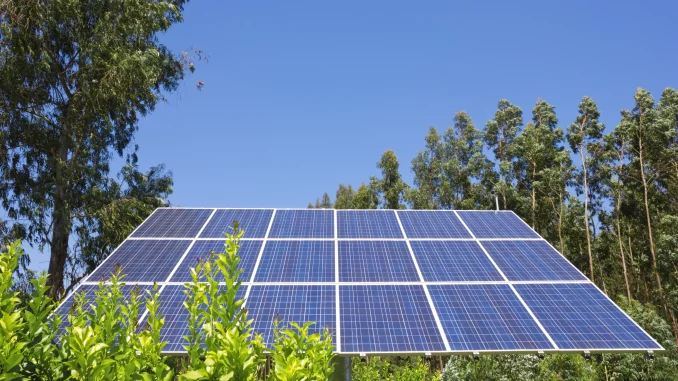
Welcome to the future of sustainable tech where solar power is revolutionizing data centers! In a world increasingly reliant on digital infrastructure, the environmental impact of data centers cannot be ignored. But fear not, as innovative solutions are emerging to change the game. Let’s dive into how solar-powered data centers are leading the way towards a greener and more efficient digital landscape.
Sustainable Tech: How Solar-Powered Data Centers are Changing the Game
Data centers, the backbone of our digital world, traditionally consume vast amounts of energy and contribute significantly to carbon emissions. As awareness about sustainability grows, the tech industry is seeking innovative ways to reduce its environmental footprint. Enter solar-powered data centers – a game-changer in the quest for greener technology solutions.
By harnessing the power of sunlight, these data centers not only lower their reliance on fossil fuels but also generate clean energy that can be used efficiently. The integration of solar panels into data center design is transforming how we think about powering our digital infrastructure.
Implementing solar data center strategies involves careful planning and consideration of factors like location, climate conditions, and energy storage capabilities. This shift towards renewable energy sources marks a significant step towards creating more sustainable tech solutions for the future.
The Environmental Impact of Data Centers
Data centers play a crucial role in our digital world, supporting the storage and processing of vast amounts of data. However, with great power comes great responsibility. The environmental impact of traditional data centers is significant, consuming massive amounts of energy and contributing to carbon emissions.
The cooling systems alone can be major energy hogs, requiring constant electricity to maintain optimal operating temperatures for servers. Additionally, the reliance on non-renewable energy sources further exacerbates the problem.
As awareness of climate change grows, there is a growing push towards more sustainable solutions like solar-powered data centers. By harnessing the abundant energy from the sun, these facilities can reduce their carbon footprint significantly while also reducing operational costs in the long run.
Embracing renewable energy sources not only benefits the environment but also sets a positive example for other industries to follow suit in adopting eco-friendly practices.
The Integration of Solar Energy in Data Centers
Data centers are essential for storing and processing vast amounts of data generated in our digital world. However, their energy consumption has raised concerns about sustainability. The integration of solar energy into data center operations is revolutionizing the way these facilities operate. By harnessing the power of the sun, data centers can significantly reduce their reliance on traditional energy sources.
Solar panels installed on rooftops or in nearby fields capture sunlight and convert it into electricity to power servers and cooling systems. This renewable energy source not only lowers operational costs but also reduces carbon emissions, making data centers more environmentally friendly. Integrating solar energy requires careful planning and design to ensure optimal performance and efficiency.
As technology continues to advance, we can expect more innovative solutions for integrating sustainable practices into data center operations seamlessly. Solar-powered data centers represent a significant step towards creating a greener future for digital infrastructure.
Implementing Solar Data Center Design Strategies
When it comes to implementing solar data center design strategies, there are various innovative approaches that can be utilized. One key strategy is optimizing the layout and orientation of the data center building to maximize exposure to sunlight. This involves careful planning of the architectural design to ensure efficient utilization of solar panels.
Another important aspect is integrating energy-efficient cooling systems and equipment within the data center infrastructure. By using advanced technologies such as liquid immersion cooling or hot aisle containment, energy consumption can be significantly reduced.
Furthermore, incorporating smart monitoring systems allows for real-time tracking of energy usage and performance metrics. This data can then be used to fine-tune operations and further enhance efficiency.
By adopting these design strategies, data centers can harness the power of solar energy effectively while minimizing their environmental footprint.
Advantages of Solar-Powered Data Centers
Solar-powered data centers offer numerous advantages in today’s tech landscape. They significantly reduce carbon emissions and help combat climate change by harnessing clean energy from the sun. This not only benefits the environment but also enhances a company’s sustainability efforts.
Additionally, solar-powered data centers are more reliable during power outages since they can operate independently of the grid to some extent. This added resilience is crucial for businesses that rely heavily on uninterrupted data services.
Moreover, utilizing solar energy can lead to cost savings in the long run as it reduces dependency on traditional electricity sources and helps mitigate fluctuating energy prices. This financial benefit coupled with environmental stewardship makes solar-powered data centers a smart investment for forward-thinking companies looking to future-proof their operations.